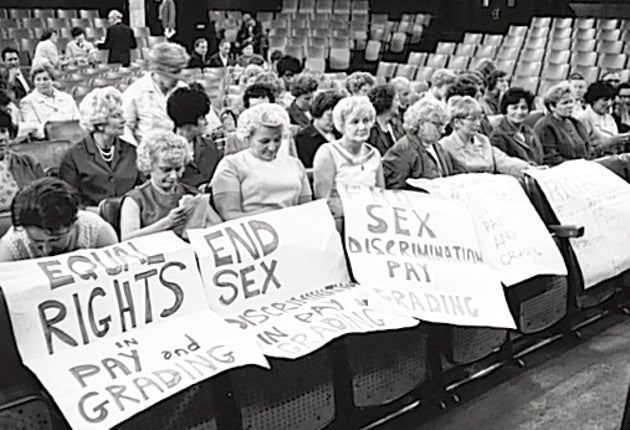The Timeline: Women's pay

The bad old days, 1880s
While male unions became ever more organised, women relied largely on philanthropic groups. Early action such as the 1888 "match girl" strike at the Bryant & May factory in London focused on working conditions rather than wages. As the Women's Trade Union League became more militant, pay rose up the agenda. The League's secretary, Clementina Black, moved the first successful equal-pay resolution at the Trades Union Congress in 1888.
The battlefield, 1914
The war brought an influx of women into the workplace. In 1915, at the Cleator Mill in Cumbria, women protested over unequal war bonuses, and a year later, carriage cleaners at London's Old Oak Common depot did the same. With the decision to grant universal suffrage in 1918, equal pay became a pressing issue. That year, female Tube workers launched a strike over bonuses and action by bus girls brought the city to a virtual standstill.
Early child care, 1940s
With women being conscripted into wartime industry, the government had to find a way to address women's "double burden". By 1943, 1345 nurseries had been established (compared with the 14 existing in 1940), though it was made clear that this was just for wartime. The option of part-time work also emerged, though other aspects – such as maternity benefits – remained low on the agenda.
The breakthrough, 1970s
In 1968, sewing machinists at the Ford plant in Dagenham went on a three-week strike demanding equal pay. Their high-profile action, which included a meeting Employment Minister Barbara Castle, paved the way for the inaugural Equal Pay Act. Coming into force December 1975, it prohibited differentiation of wages, holidays, pension rights, perks and bonuses based on gender. Though it subsequently was criticised for failing to outlaw racial discrimination, it provided a ground-breaking milestone in the history of women's rights.
Cooking up a fight, 1988
After 10 years and three tribunals, Julie Hayward, a worker in the kitchen of the Cammell Laird shipyard in Birkenhead, won the first case of "equal pay for equal value". She contested that the skills required for her job meant she should be paid the equivalent to her male colleagues in the shipyard.
Still a long way off, 2005
By 2005, the number of women belonging to a trade union outnumbered men, and the number of days lost to industrial disputes is at its lowest point on record. Even so, this week, a study by the Chartered Management Institute discovered that women in the UK face a 57-year wait before their take-home pay equals that of their male counterparts'. The path to parity continues.
Join our commenting forum
Join thought-provoking conversations, follow other Independent readers and see their replies
Comments